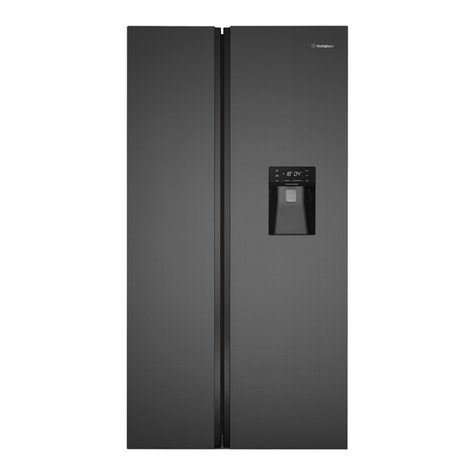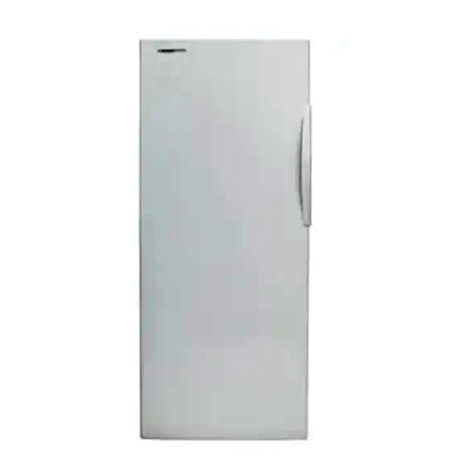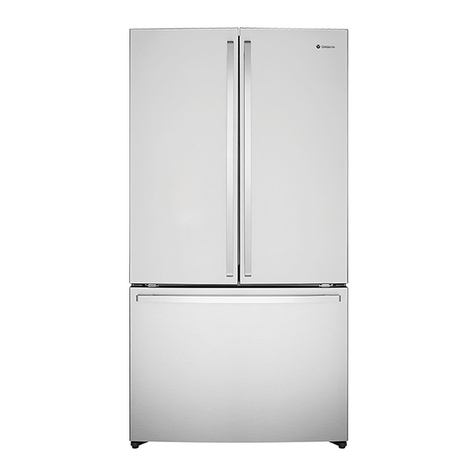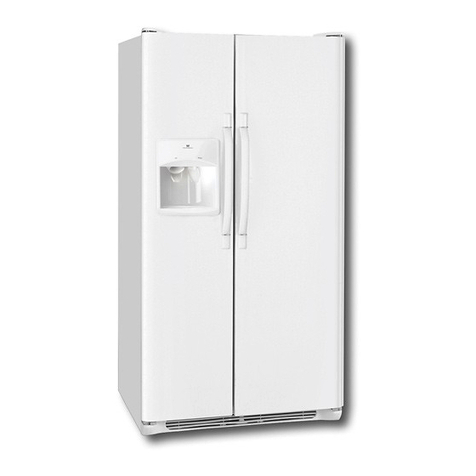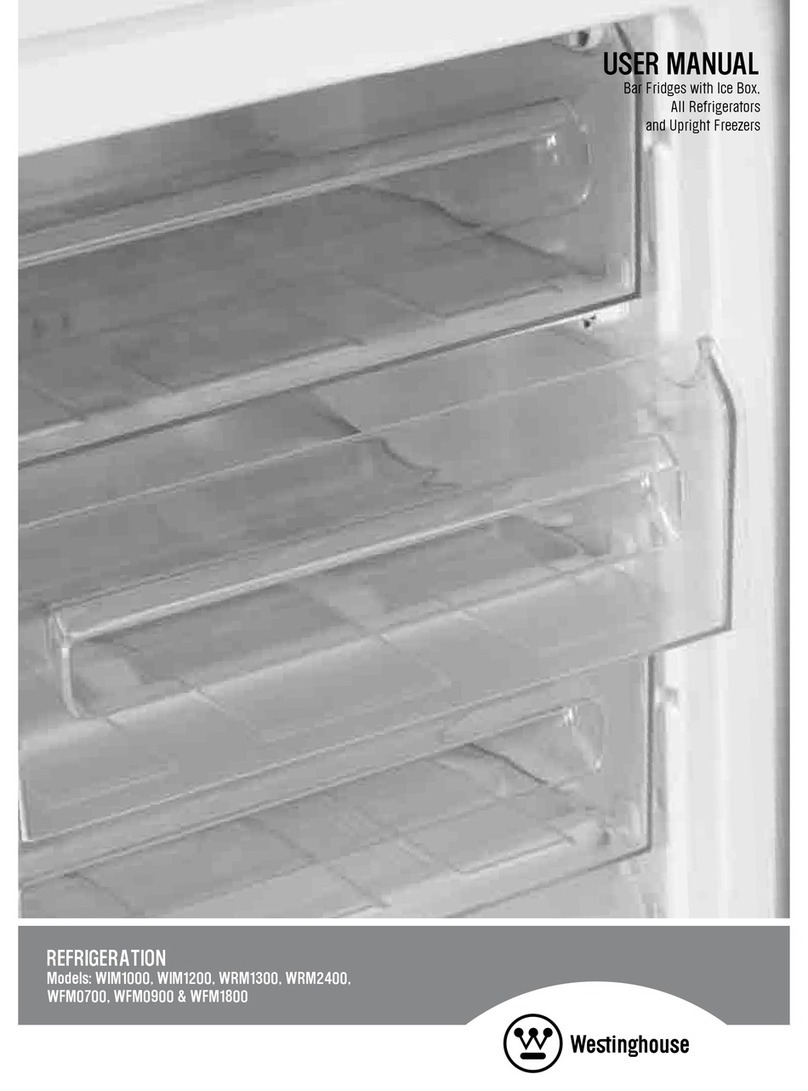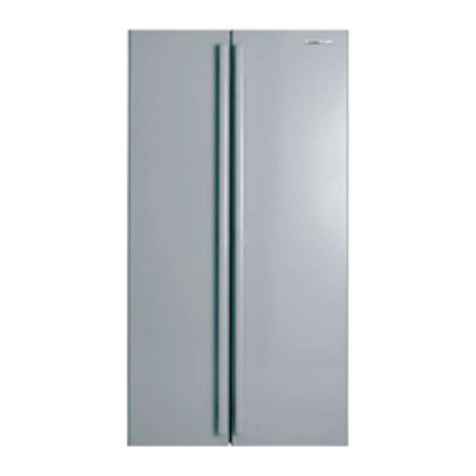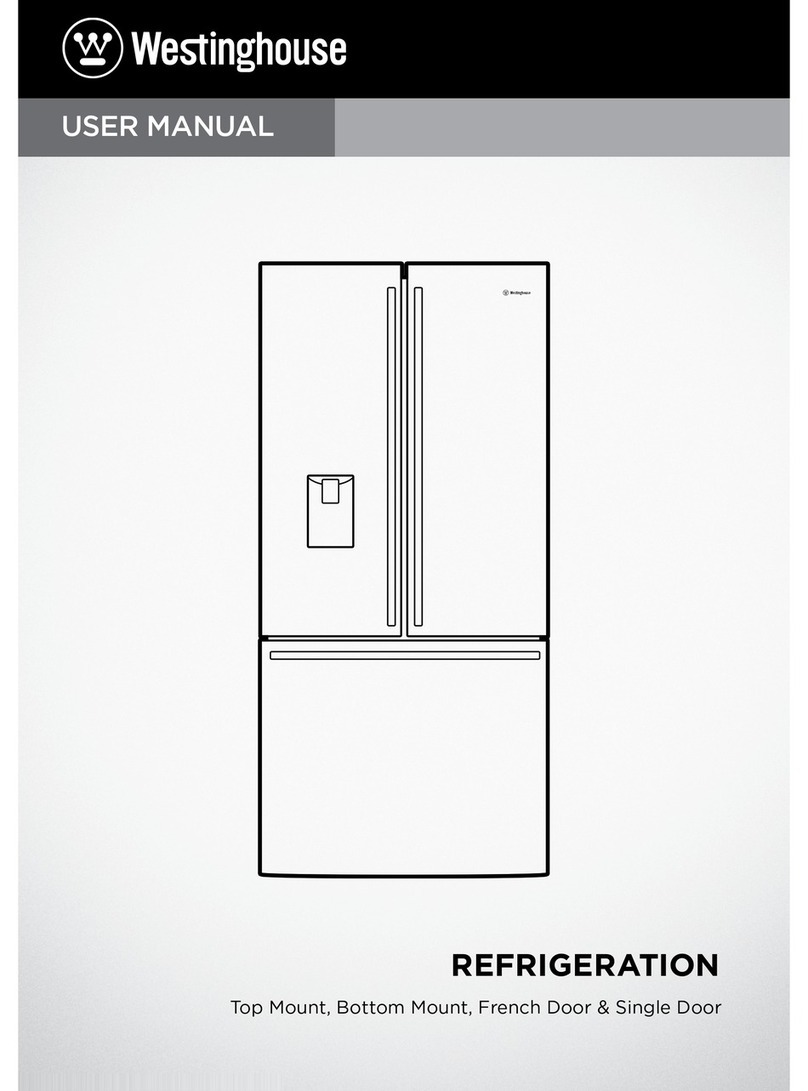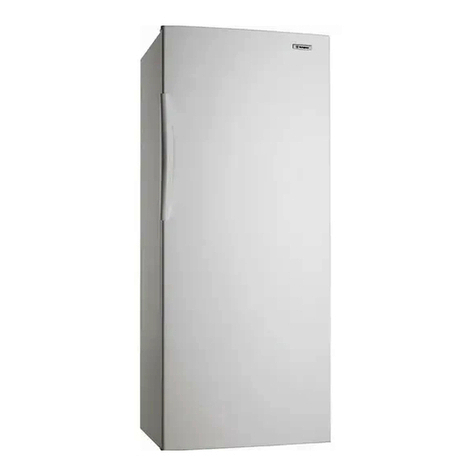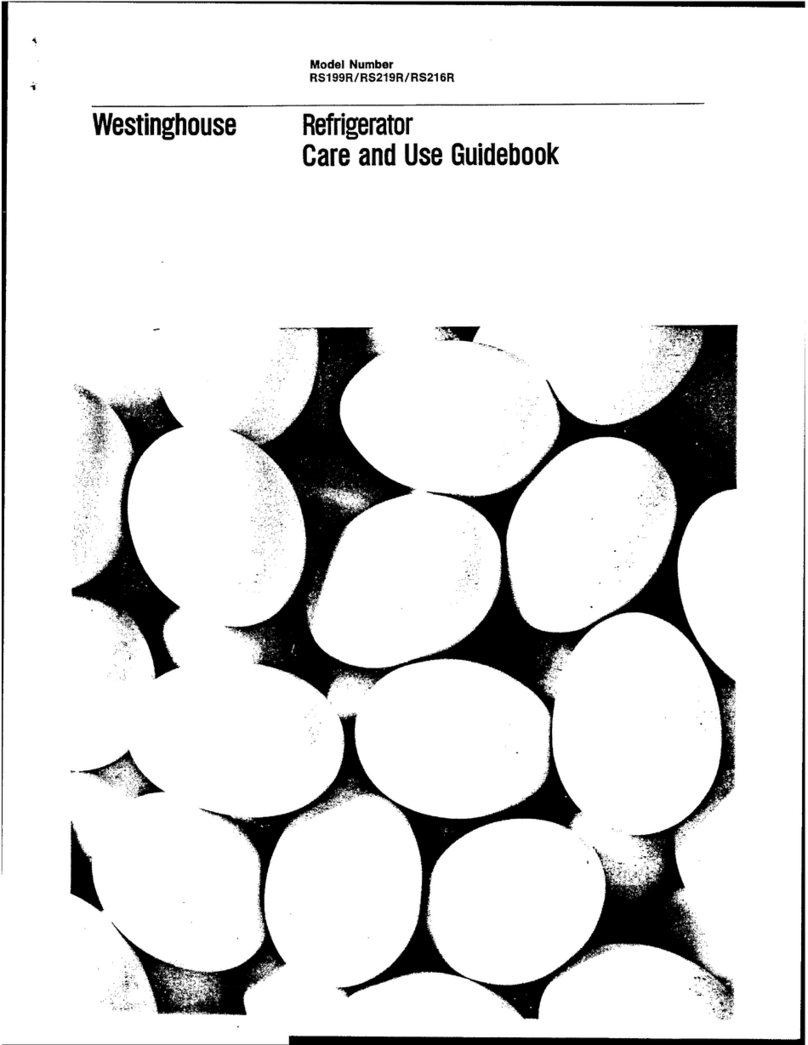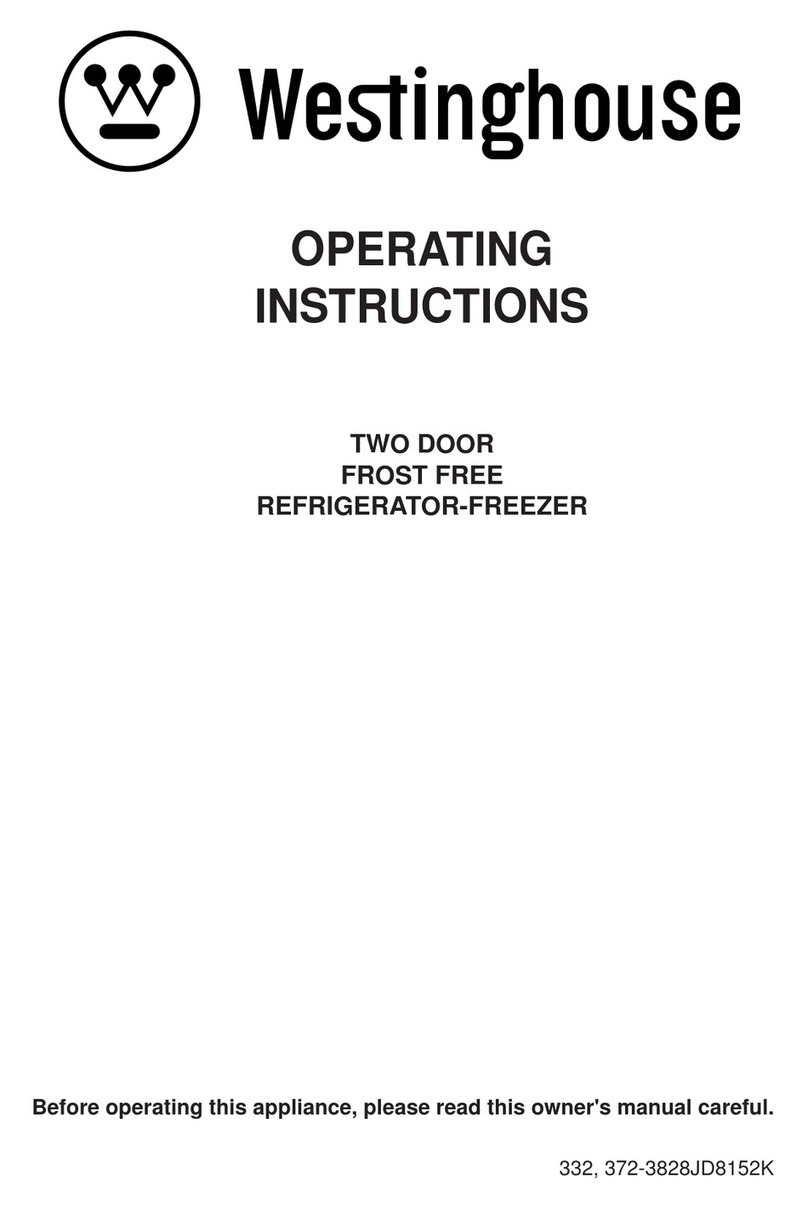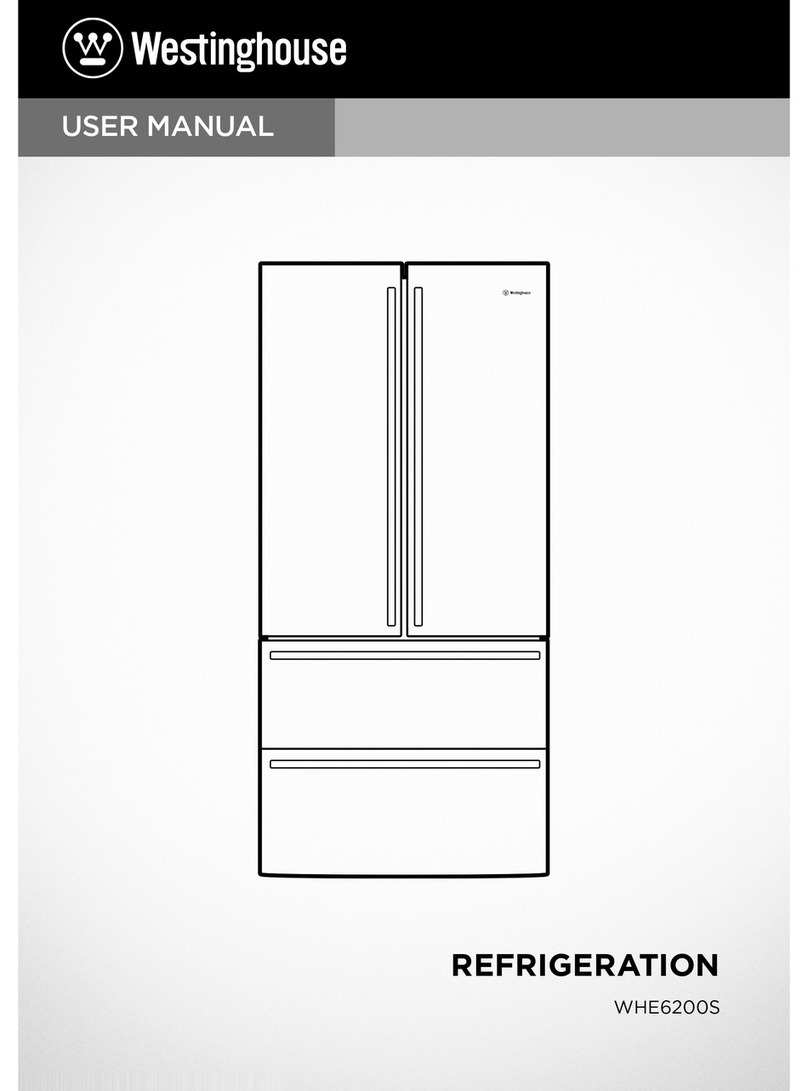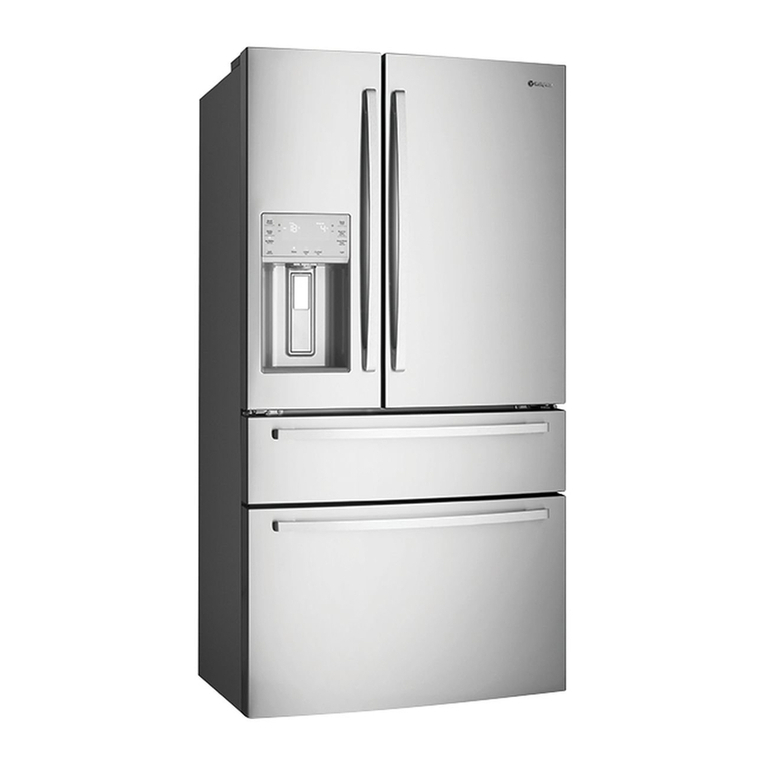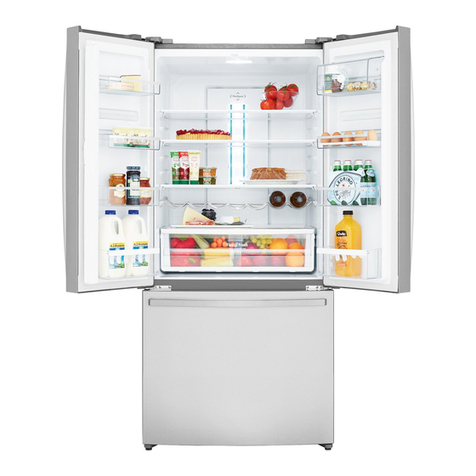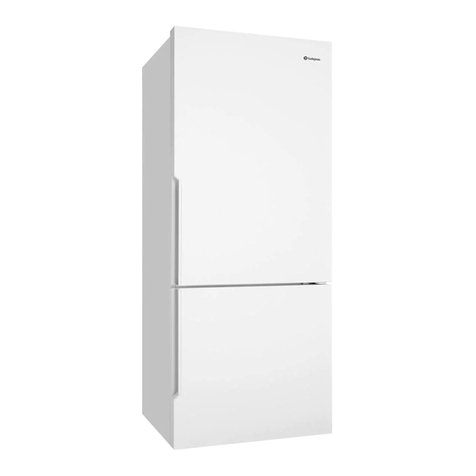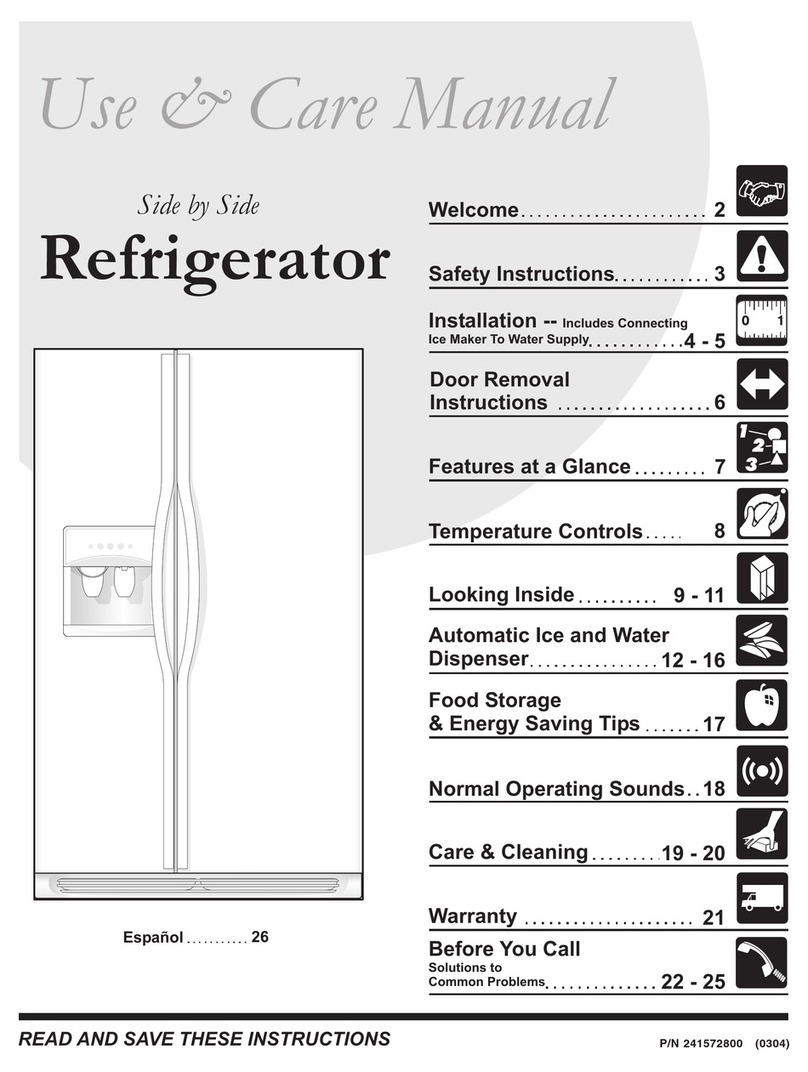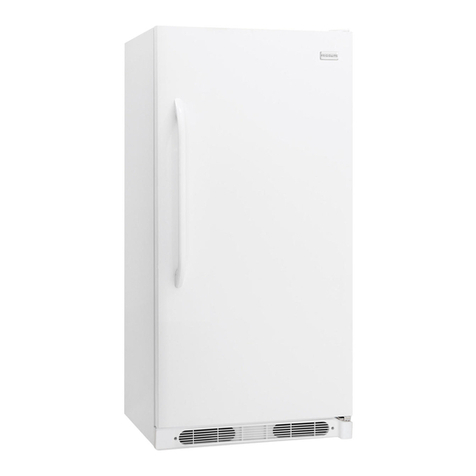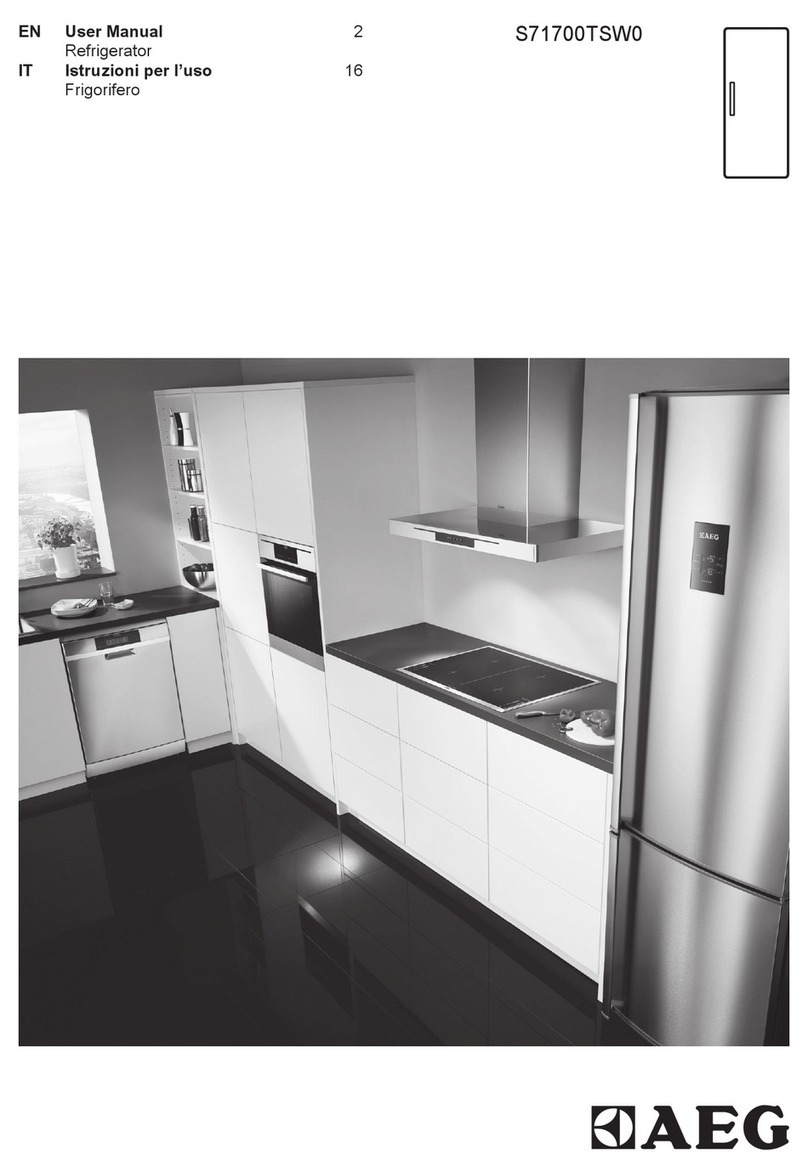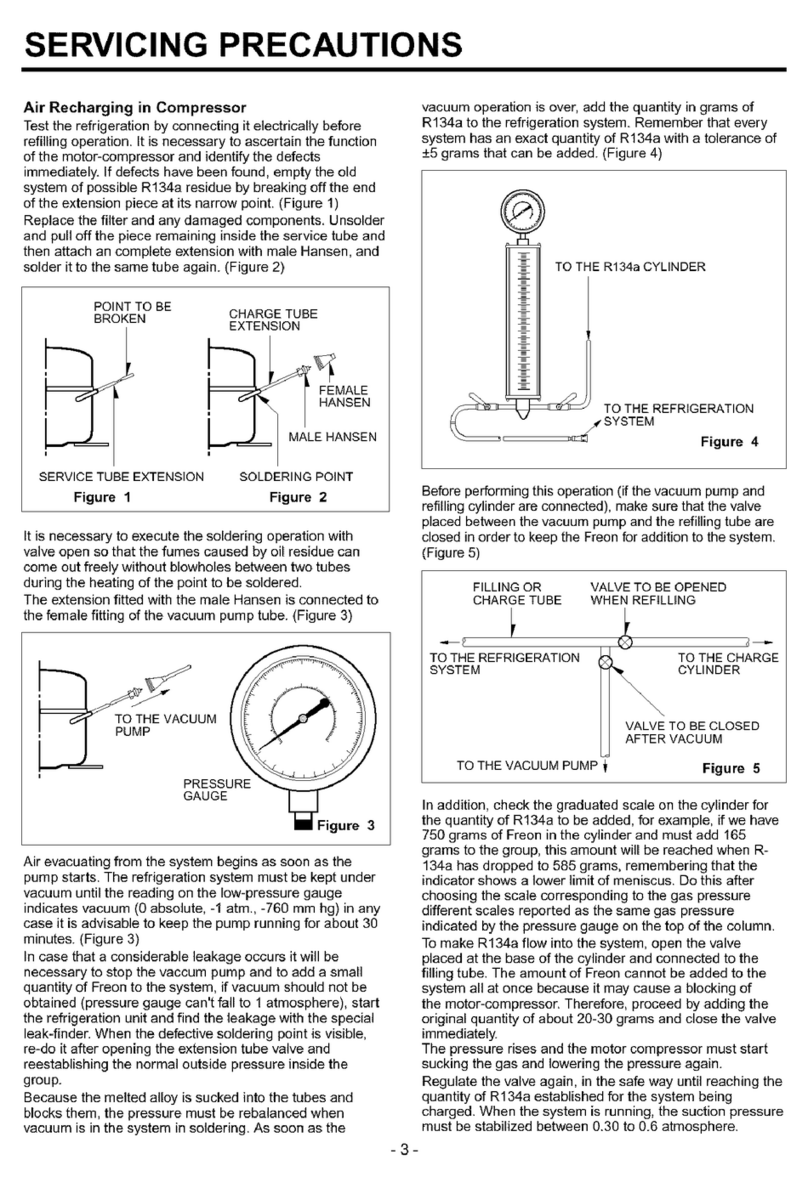
If you think something may be wrong with your refrigerator,
you can carry out some easy checks before calling for
service. You may locate the problem, sparing yourself from
inconvenience, saving time and money.
into the power outlet properly and that the
outlet is switched ‘ON’.
power outlet. If no power is coming from
the outlet you may have blown a fuse or
tripped a circuit of your household power
supply.
slightly “colder” position.
operate during the automatic defrost
cycle, or for a short time after the
appliance is switched on.
increased storage capacity use high
speed compressors. These can provide a
seemingly high level of sound which is quite
normal. Normal operational sounds include:
boiling.
small fan).
defrost.
Other strange sounds may mean that
you need to check and take action. For
example, noises may mean that:
of or behind or beside the refrigerator.
touching the wall.
Remember it is quite normal for noise to
operating.
cause odours.
same time you started storing something
unusual.
Your new appliance provides you with large
capacities in both the refrigerator section
and the separate freezer. It is normal for
the motor to operate frequently. However,
to keep operation to a minimum, check the
following:
often?
“Controlling temperature”.
recently been stored? Summer, festive
seasons and holidays usually mean a lot
more work for your appliance.
the appliance will need to run more than
normal.
turned off for a long time.
clearance at the sides, back and top.
Refer to page 5 “Installing your new
appliance”.
temperature”.
long or too frequently.
holding a door open.
temperature”.
energy consumption.
fridge doors. If the doors are left partly
open a heavy frost will coat the inside of the
freezer. If a frost develops, remove it. Take
care to properly close the doors and the
frost will not reoccur.
The defrost water tray, (located on the
compressor at the back of the cabinet), may
not be properly positioned, or the drain tube
may not be properly positioned to direct
water into this tray. You may need to pull the
refrigerator away from the wall to check the
tray and tube.
If you have a problem, and the problem persists after
you have made the checks mentioned above, contact
dealer you bought the refrigerator from. Be ready to
number, which is stated on the label inside the refrigerator
compartment.
